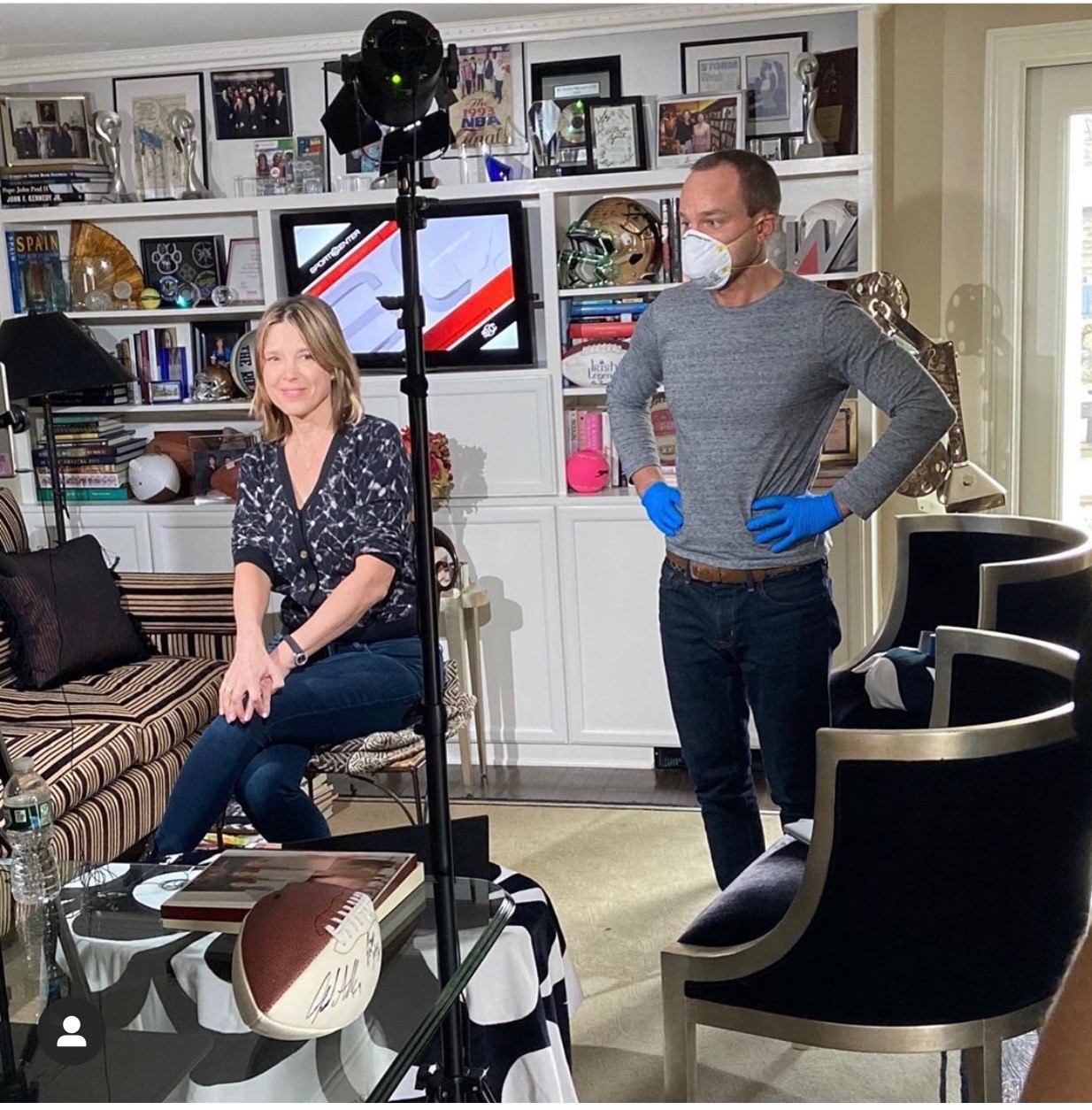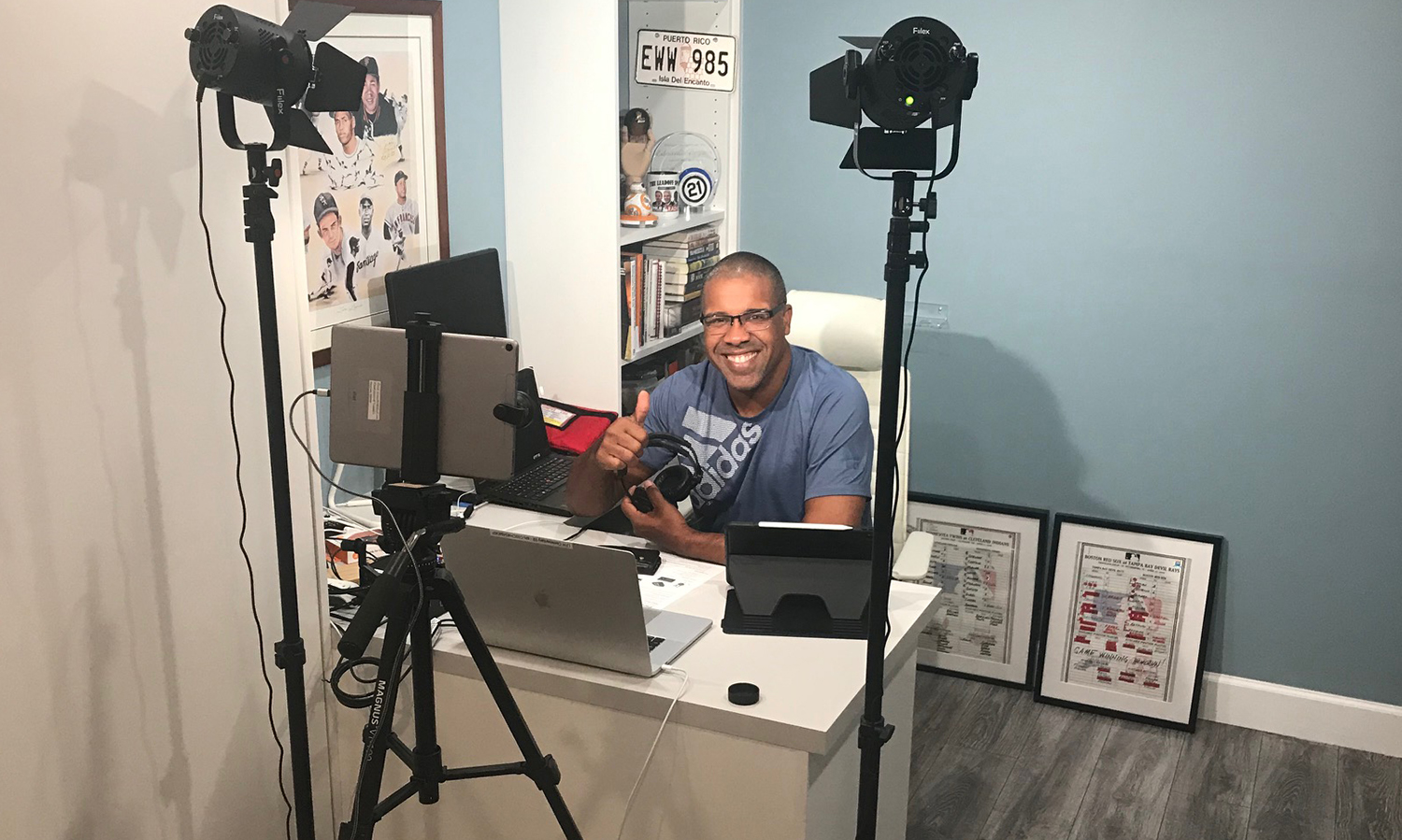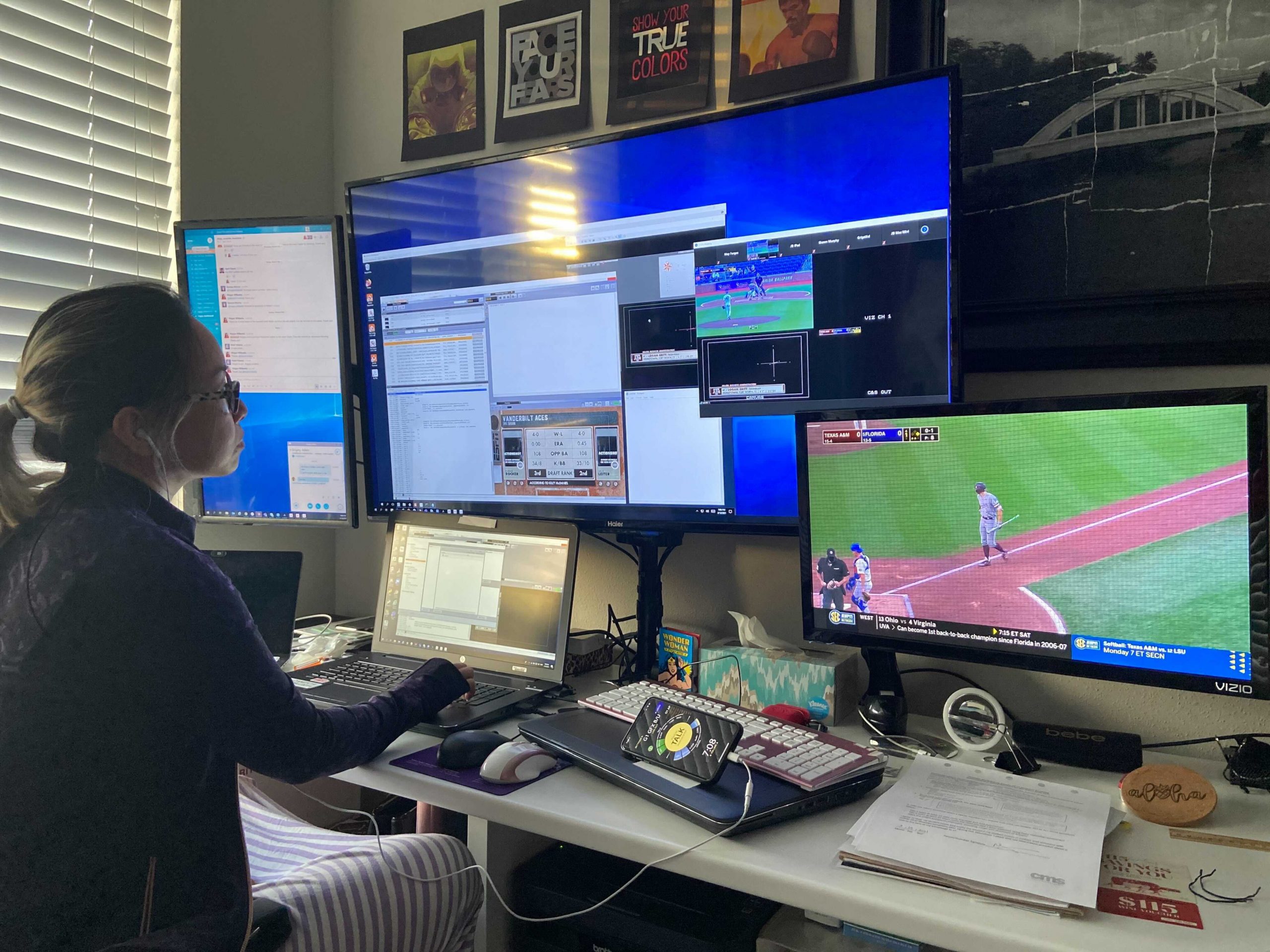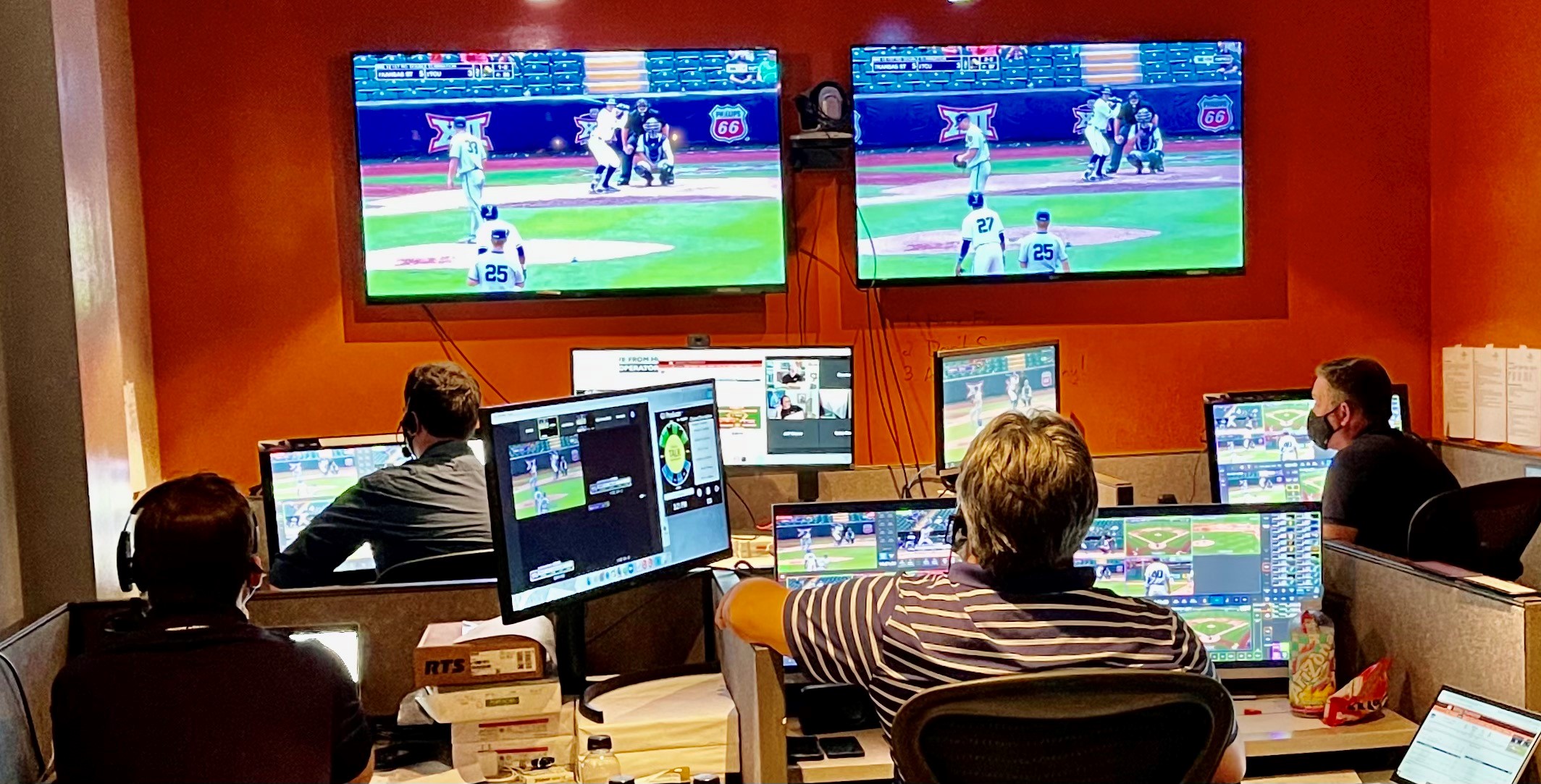ESPN’s ‘Live From Home’ Studio, Commentary Kits To Remain Key Production Asset Post Pandemic
At-home operations allow live coverage of more and lower-profile sports
Story Highlights
What began as an innovative emergency solution early in the pandemic has become a permanent tool in ESPN’s production arsenal. Even as the sports world begins to normalize and production crews and announcers head back to venues, ESPN’s Live From Home at-home studios and remote-commentary kits have become a staple of its production operations — and will continue to be for the foreseeable future.
“This is here to stay; there’s no doubt,” says Chris Calcinari, SVP, remote operations, ESPN. “Do I see us migrating talent back to site for a good majority of our major sports? Absolutely. But, when you do thousands of events [per year] like we do and they all need commentary, this is a model that will be here for the long term. We have very reliable technology in place to support all of this, and it has obviously been proven over the past year. So it’s here to stay, without a doubt.”
‘It Has Grown by Leaps and Bounds’

ESPN anchor Hannah Storm gets a Live From Home studio setup at her home, with help from Live From Home support team member.
When the pandemic shut things down in March 2020 and safety precautions essentially barred ESPN talent from its studios, the network quickly formed a “Live From Home” committee to evaluate options that would allow on-air talent and crew to produce live studio shows from the safety of their own homes. In the ensuing months, efforts by the committee — led by the Remote Operations department and comprising 30+ staffers from several ESPN departments — resulted in the launch of dozens of at-home studios for talent, a half dozen remote-commentary kits for live KBO League (Korean Baseball Association) telecasts, and a full REMI production workflow for several ESPN studio shows by mid May.
In the year since, ESPN’s remote-ops team has continued to ramp up its Live From Home efforts to serve ESPN’s live game productions and studio shows. Today, ESPN has a whopping 575 remote studios and 220 remote-commentary kits in the homes of on-air talent across the globe. Countless hours of studio content and more than 2,000 events have been produced with Live From Home studios and commentary kits.
“It has grown by leaps and bounds,” says Calcinari. “What started off as a studio initiative, where we were just putting studio kits into talents’ homes, has turned into something so much bigger. And I think, most important on the studio side, it has improved our content because, whenever a story breaks, we basically have 575 talent that we could call on instantly. Whereas we used to send talent to a third-party location or fly somebody into [one of our studios] to do an on-camera, we now can have them [do it] at their homes.”
Commentary Kits Expand ESPN’s Events Coverage Even Post-Pandemic

ESPN MLB analyst Eduardo Perez was among the first on-air talent to have a Live From Home remote-commentary system installed at his home, for coverage of KBO Korean baseball in the early days of the pandemic.
In terms of live game coverage, Live From Home commentary kits played a vital role in the return of sports last summer and fall. Although COVID-related restrictions prevented many announcers from calling games onsite, many were able to do so from their homes using Live From Home remote-commentary kits. As more and more sports properties have come back, the commentary kits have continued to play a vital role in ESPN’s coverage of lower-profile events on ESPN+, such as college Olympic sports.
“In the past, when maybe we wouldn’t have been able to put some of these events on the air, we can now do it in a very cost-effective manner,” says Calcinari. “We have thousands of Olympic sporting events every year — such as softball, lacrosse, and volleyball — and all of these tools are being used heavily on those events. The economics are obviously much better when you have these kinds of tools available to you, which means we are able to deliver more events than ever.”

Like other ESPN graphics operators, May Forges is able to work remotely from her home via Live From Home kit.
In addition to studio and commentary operations, Live From Home systems are deployed by ESPN graphics operators and some other crew members. The broadcaster is also currently implementing Live From Home setups that allow producers and directors to produce shows from home.
“We’re setting them up with all the necessary tools to be able to have the monitor wall in front of them just like they would in the [control room],” says Calcinari. “We’re setting them up with multiviewers at their house, the necessary communications, access to research and statistics, etc. For example, if we had an event happening at a [college campus] and wanted to have our own producer, we can easily do that with the tools that we put in place.”
Support Team Continues To Improve Live From Home Kits

In addition to working from home, ESPN commentators can call games from off-tube announce pods, such as this one for Big 12 Championship baseball in Bristol, CT.
As part of this initiative, ESPN has formed a dedicated support team to ensure that all Live From Home events maintain the quality expected by viewers.
“We have a good-size group now that supports Live From Home on a full-time basis,” says Calcinari. “Every single one of the 2,000-plus events we’ve done has a person assigned to it to help the talent check in, monitor their levels, and monitor that game throughout its entirety. If there are any problems, we have a skilled person to address them quickly so that we don’t have an on-air impact. And that group is going to be a permanent fixture in our department.”
In addition to increasing the number of kits deployed, the Live From Home support team has continued to improve the quality and reliability of the systems over the past year.
“We’ve tried to harden the systems as well as focus on connectivity,” Calcinari explains. “Of course, in the beginning, there were some hiccups along the way, but we’ve pretty much ironed all of those out. And our goal has been to provide the talent with the tools they would normally have when they’re onsite, like the talkback box so they can talk to each other, to production, and to research. They have their normal headset and can control all the
levels for all the sources. We’re trying to make talent feel just like they’re in a commentary booth when they’re operating their system.”
He adds that ESPN has also focused on enhanced connectivity at talent’s respective homes, using a mix of business-class internet, bonded cellular, and other technologies.
“There’s no question this past year for ESPN and for the industry as a whole has been really hard,” says Calcinari. “But we’ve learned so much about how to operate in a completely new and efficient way. I could never have dreamed that we would be here if you had asked me [at the start of the pandemic]. I’m so proud of how hard everyone has worked and has been innovative in ways that I couldn’t have imagined. We had thought about implementing these types of things in the past but never had time or the resources to focus on them. Although it has been challenging, the pandemic has moved innovation forward several years.”

